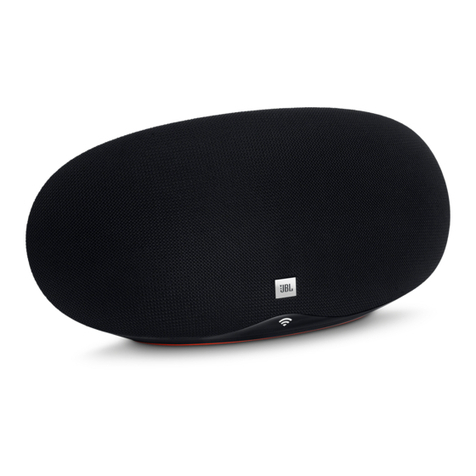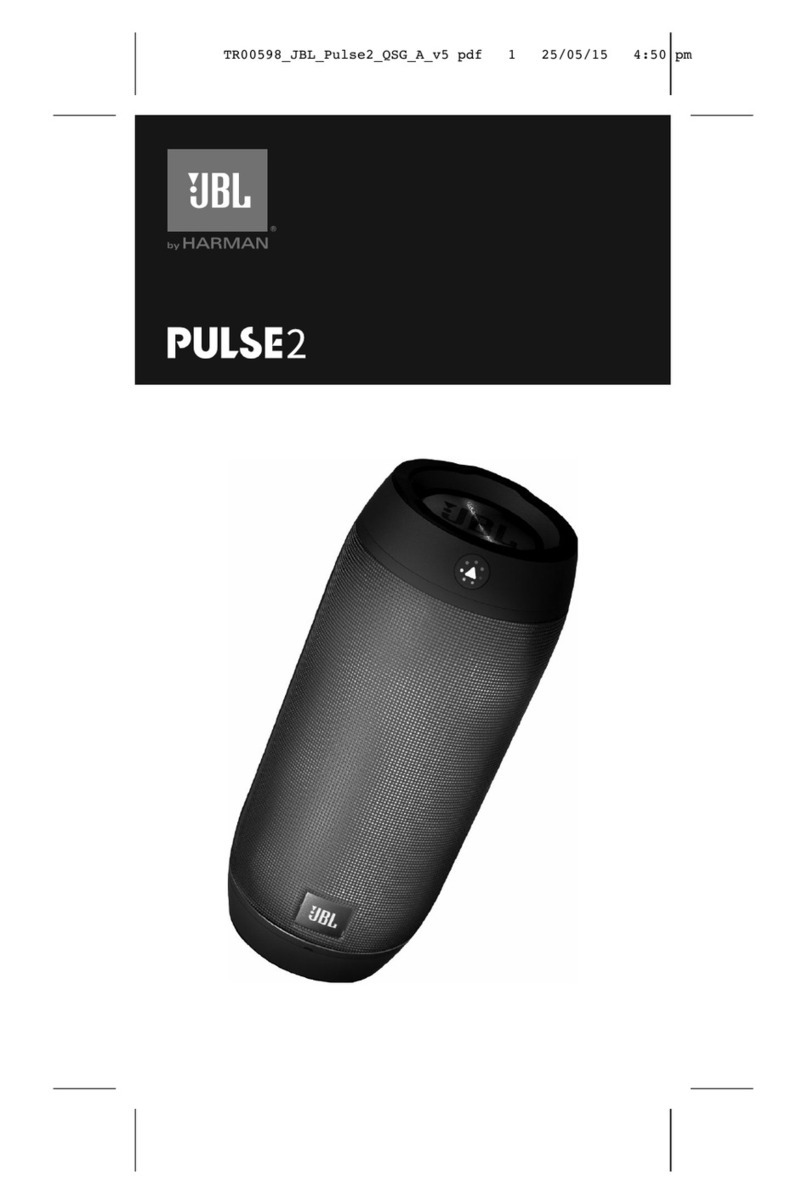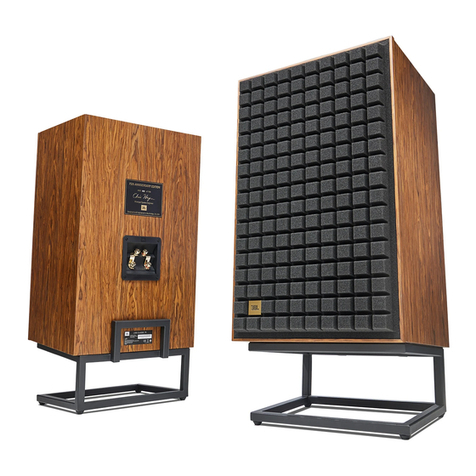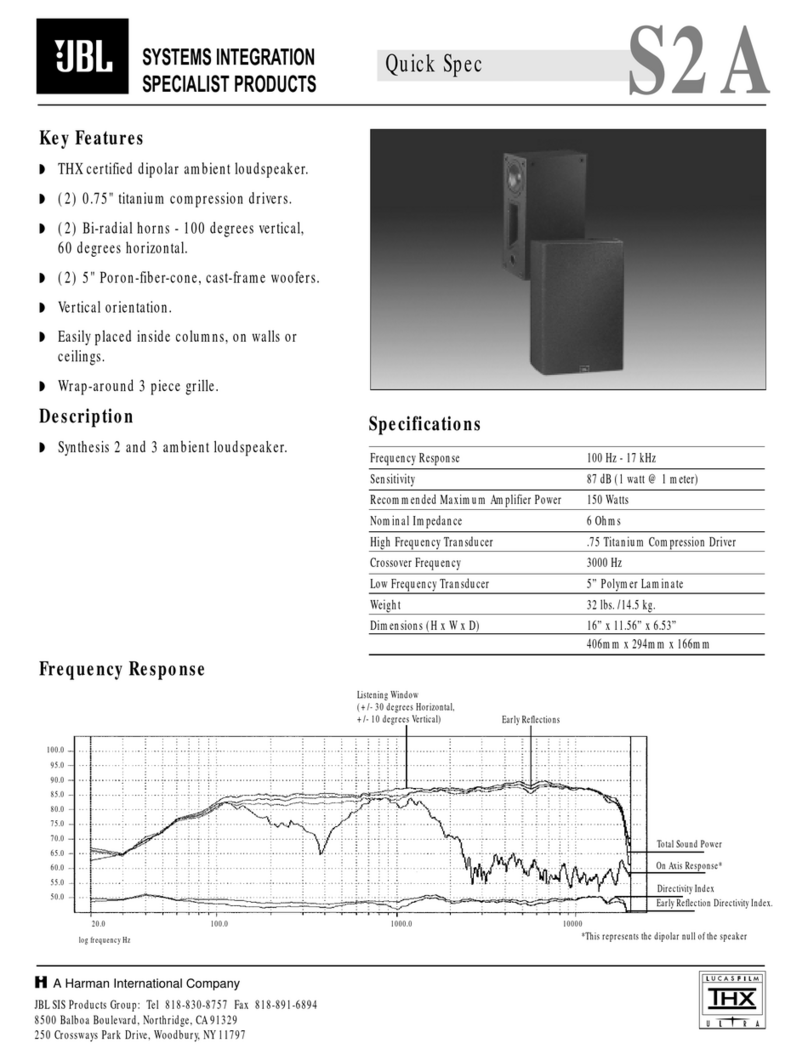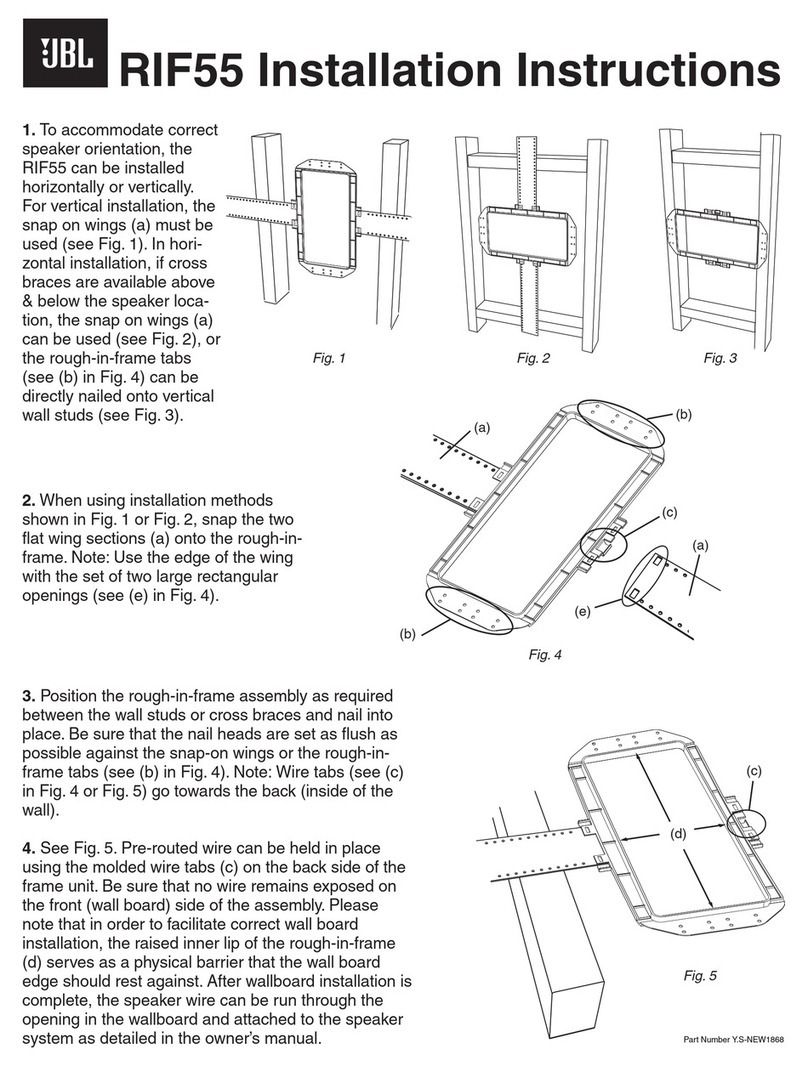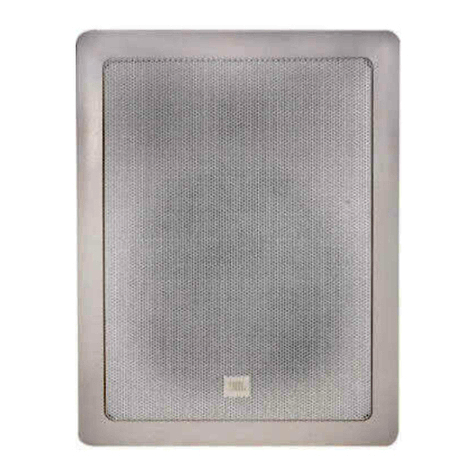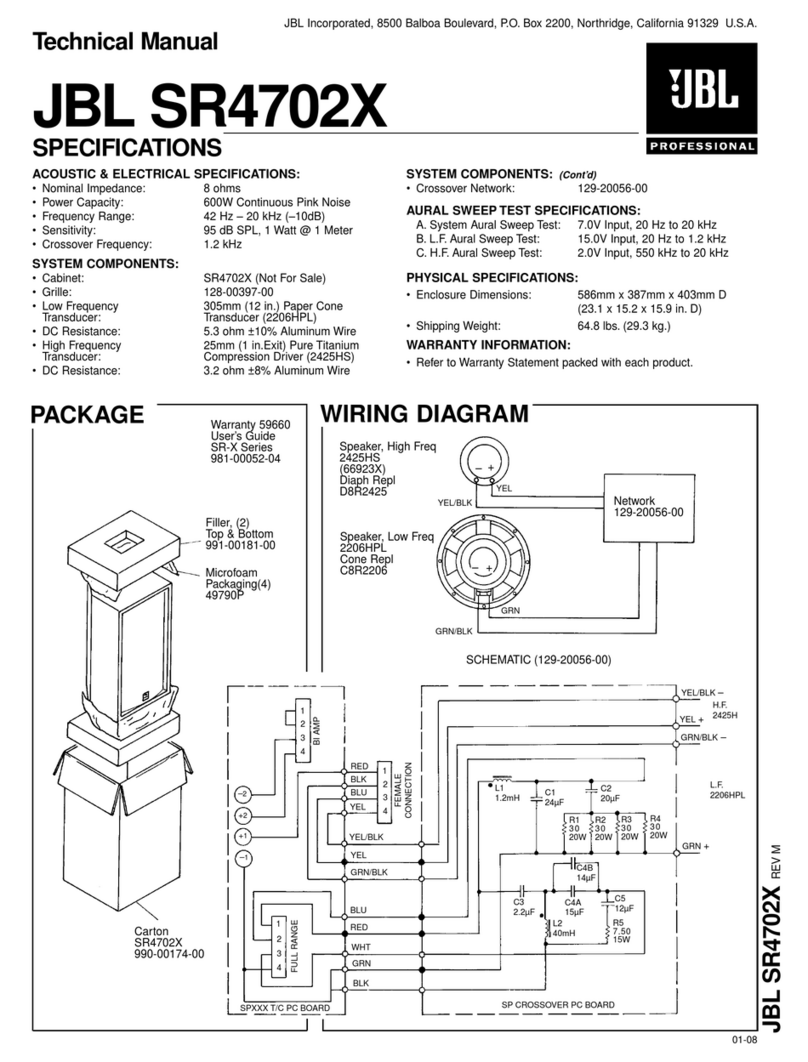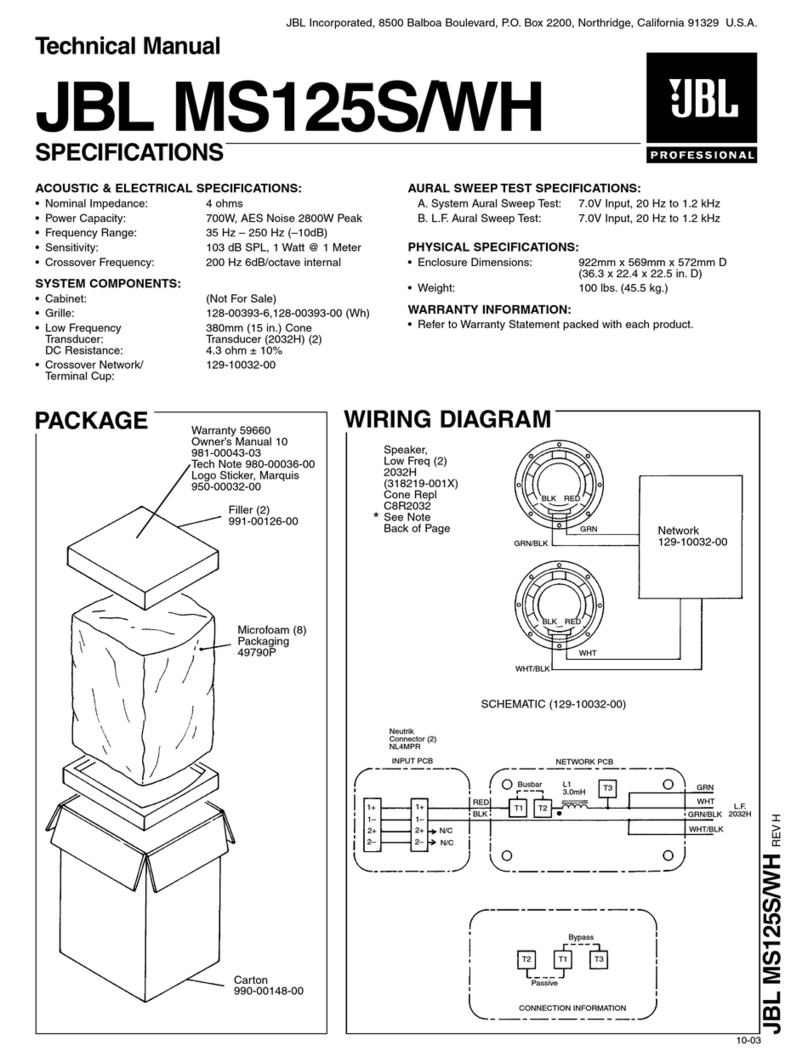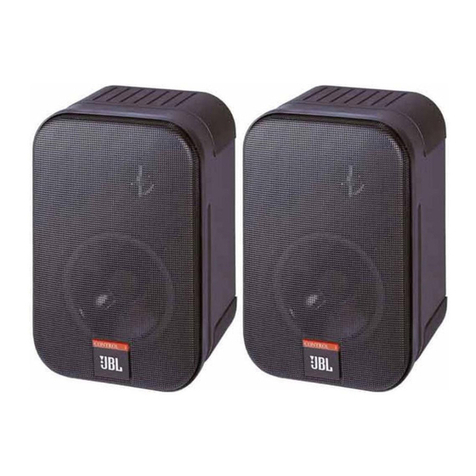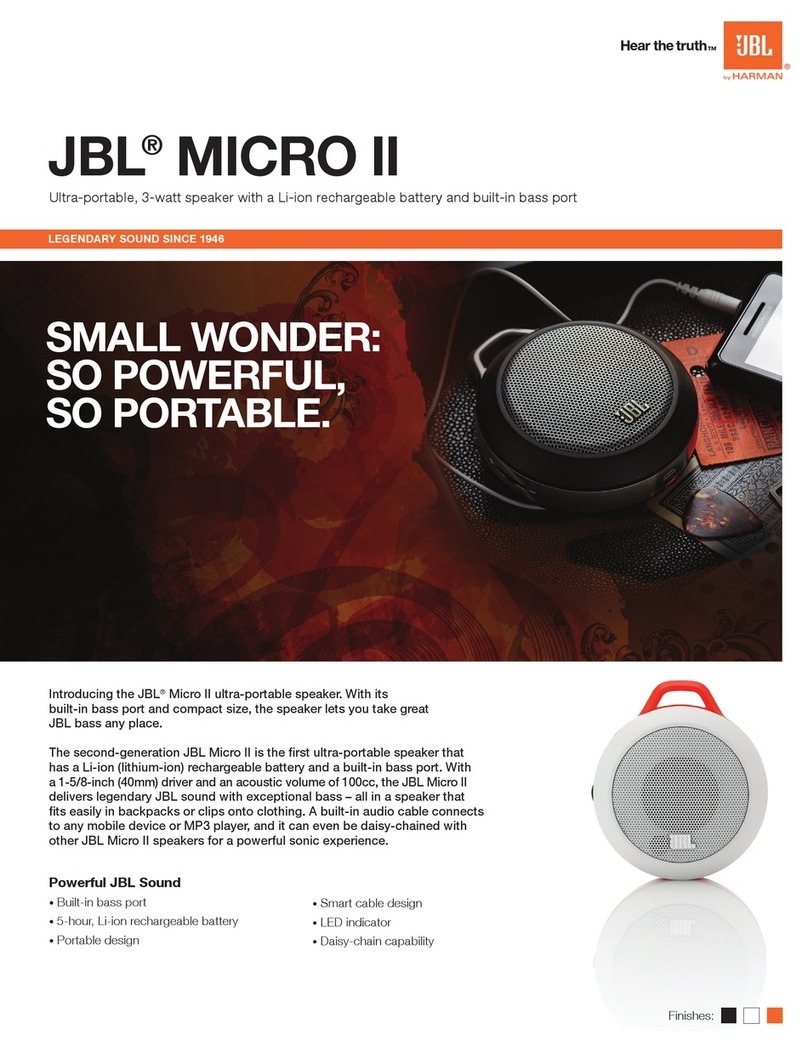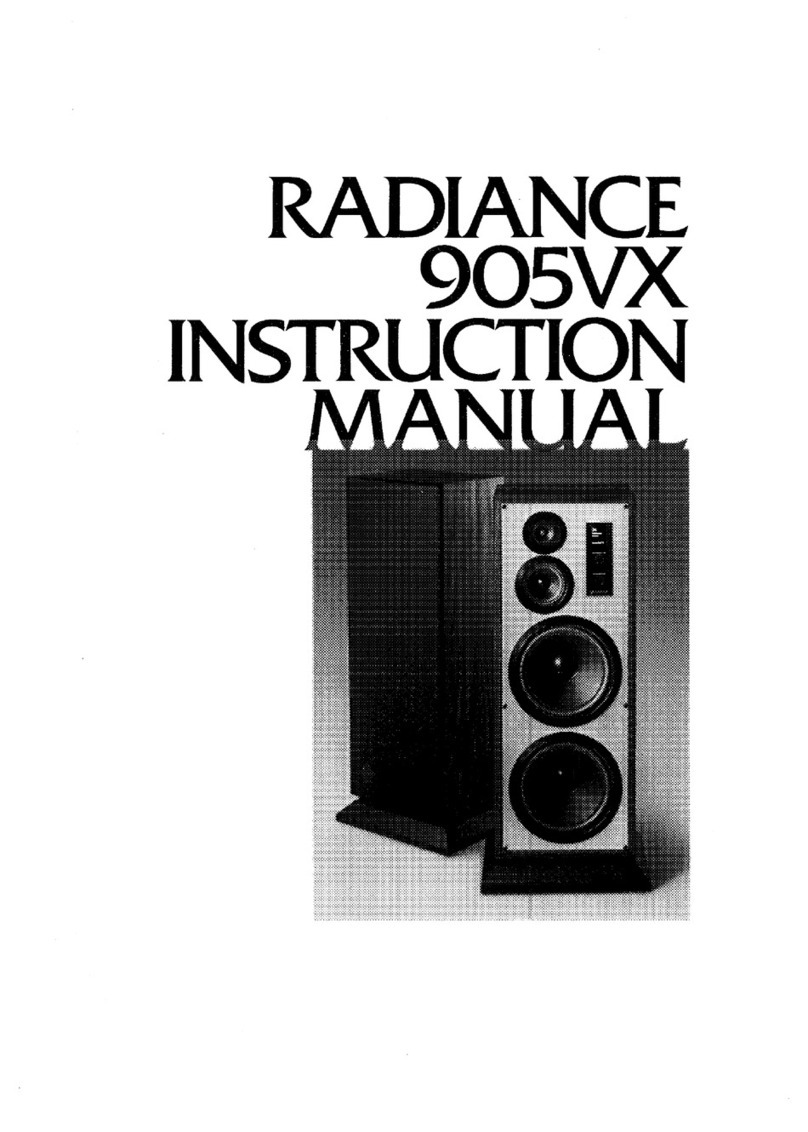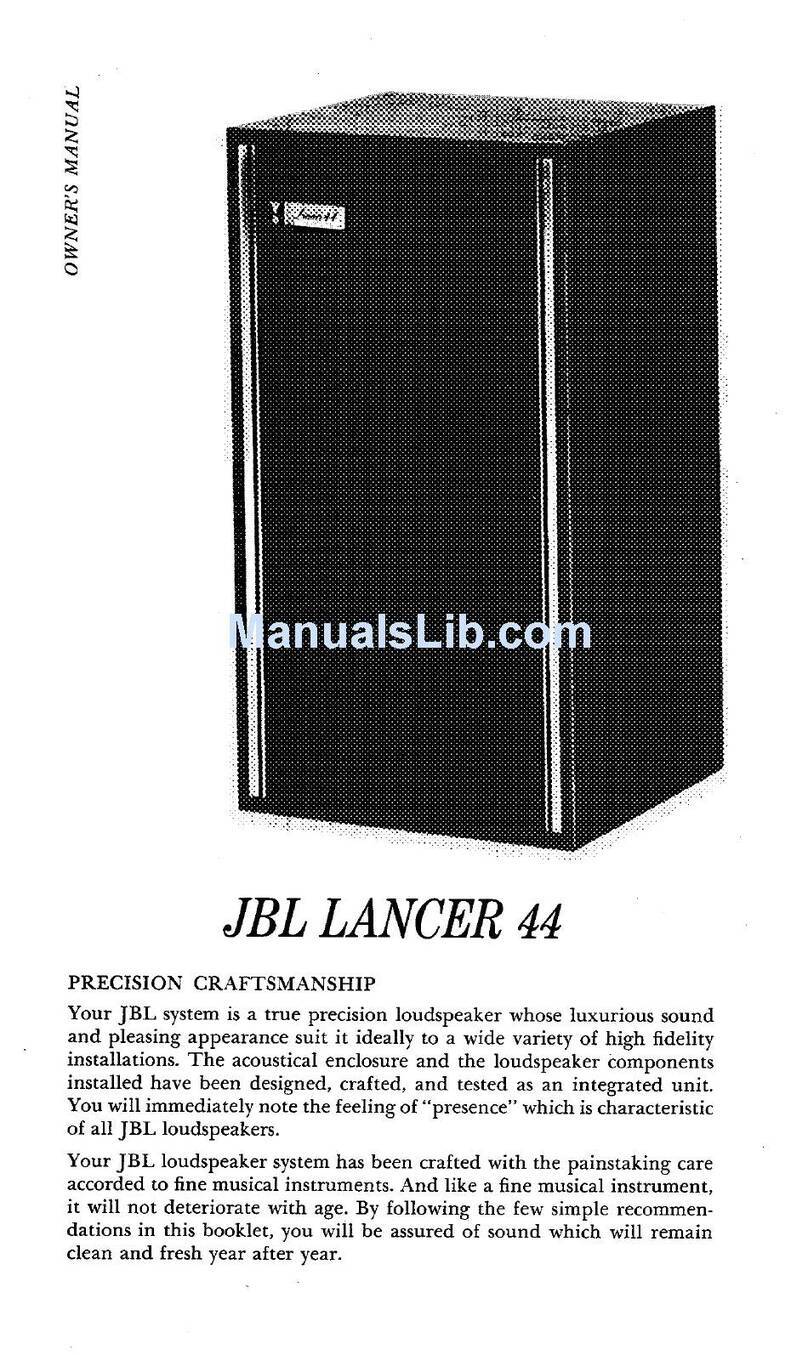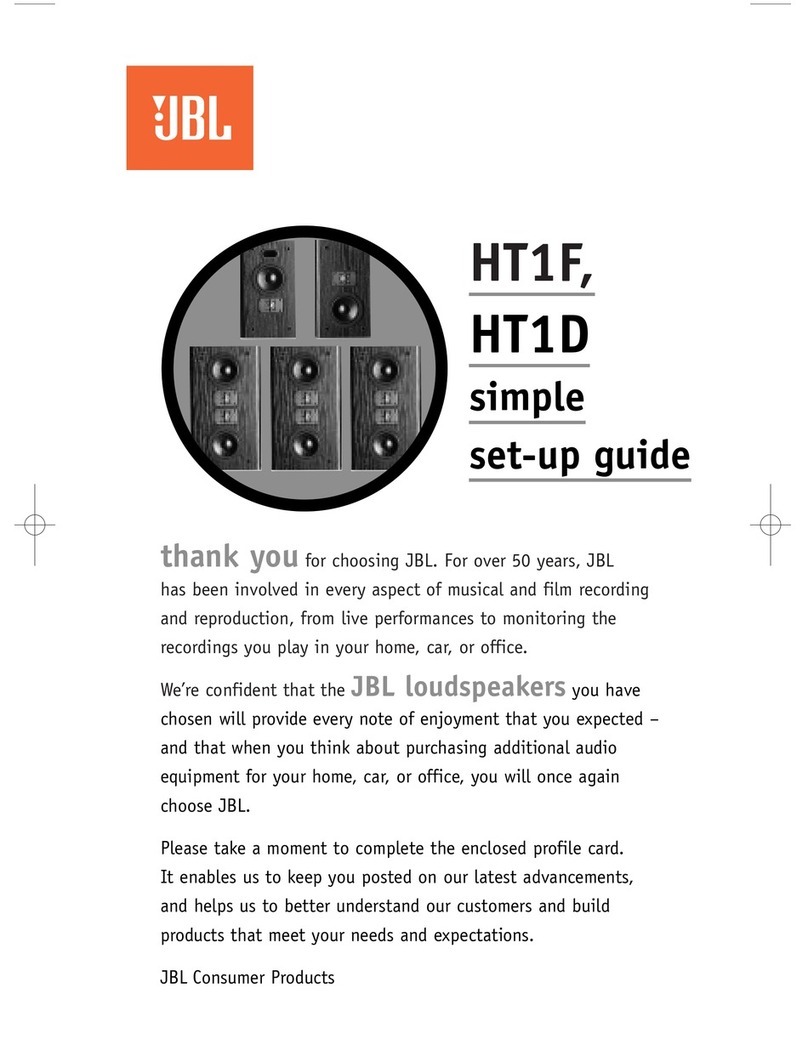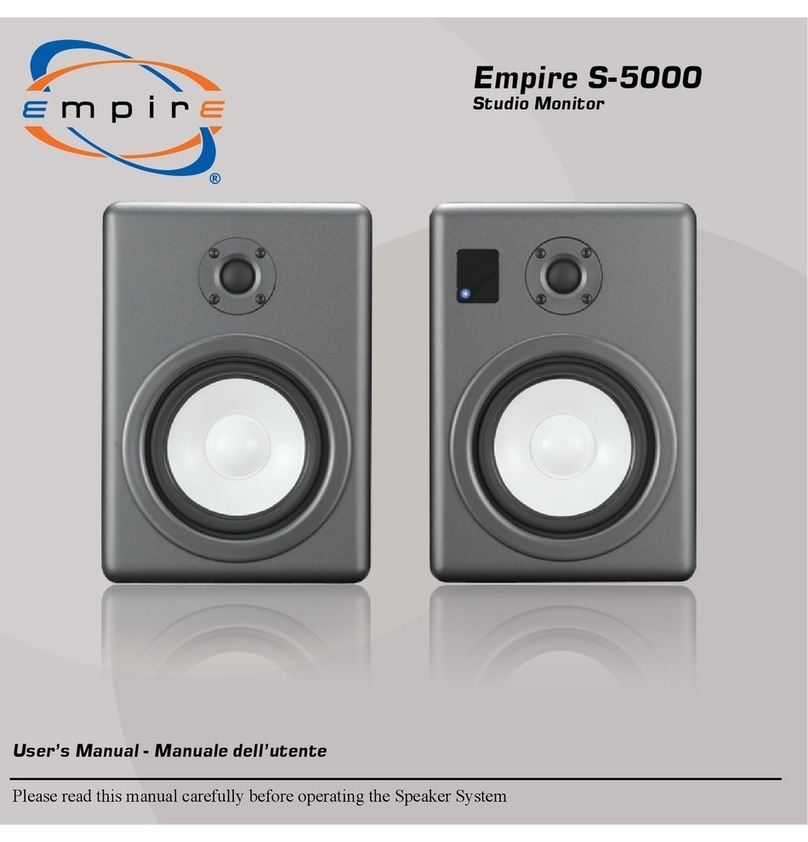– 2 –– 2 –
1. Read Instructions. All
the safety and operating
instructions should be
read before the product is
operated.
2. Retain Instructions. The
safety and operating instruc-
tions should be retained for
future reference.
3. Heed Warnings. All warn-
ings on the product and in
the operating instructions
should be adhered to.
4. Follow Instructions. All
operating and use instruc-
tions should be followed.
5. Water and Moisture. The
product should not be used
near water – for example,
near a bathtub, washbowl,
kitchen sink, laundry tub, in
a wet basement or near a
swimming pool, and the like.
6. Accessories. Do not place
this product on an unstable
cart, stand, tripod, bracket
or table. The product may
fall, causing serious injury to
a child or adult, and serious
damage to the product. Use
only with a cart, stand, tri-
pod, bracket or table recom-
mended by the manufacturer,
or sold with the product.
Any mounting of the product
should follow the manufac-
turer’s instructions, and
should use a mounting
accessory recommended by
the manufacturer.
7. Wall or Ceiling
Mounting. The product
should be mounted on a
wall or ceiling only when,
and as, recommended by the
manufacturer.
8. Ventilation. Slots and
openings in the cabinet are
provided for ventilation and
to ensure reliable operation
of the product and to protect
it from overheating, and
these openings must not be
blocked or covered. The
openings should never be
blocked by placing the prod-
uct on a bed, sofa, rug or
other similar surface. This
product should not be placed
in a built-in installation
such as a bookcase or rack
unless proper ventilation
is provided or the manufac-
turer’s instructions have
been adhered to.
9. Heat. The product should
be situated away from heat
sources such as radiators,
heat registers, stoves or
other products that produce
heat. If placed near an
amplifier, check with
the manufacturer for
applicability.
10. Power Sources. This
product should be operated
only from the type of power
source indicated on the
marking label. If you are not
sure of the type of power
supply to your home, consult
your product dealer or local
power company. For products
intended to operate from
battery power, or other
sources, refer to the
operating instructions.
11. Grounding or
Polarization. This product
may be equipped with a
polarized alternating-current
line plug (a plug having one
blade wider than the other).
This plug will fit into the
power outlet only one way.
This is a safety feature. If
you are unable to insert the
plug fully into the outlet, try
reversing the plug. If the
plug should still fail to fit,
contact your electrician to
replace your obsolete outlet.
Do not defeat the safety pur-
pose of the polarized plug.
12. Power-Cord Protection.
Power-supply cords should
be routed so that they are
not likely to be walked on or
pinched by items placed
upon or against them, pay-
ing particular attention to
cords at plugs, convenience
receptacles and the point
where they exit from the
product.
13. Cleaning. Unplug this
product from the wall outlet
before cleaning. Do not use
liquid cleaners or aerosol
cleaners. Use a damp cloth
for cleaning.
14. Nonuse Periods. The
power cord of the product
should be unplugged from
the outlet when left unused
for long periods of time.
15. Lightning. For added
protection for this product
during a lightning storm, or
when it is left unattended
and unused for long periods
of time, unplug it from the
wall outlet and disconnect
the antenna or cable system.
This will prevent damage to
the product due to lightning
and power-line surges.
16. Overloading. Do not
overload wall outlets, exten-
sion cords or integral conve-
nience receptacles, as this
can result in a risk of fire or
electric shock.
17. Object and Liquid
Entry. Never push objects of
any kind into this product
through openings, as they
may touch dangerous voltage
points or short-out parts
that could result in a fire or
electric shock. Never spill
liquid of any kind on the
product.
18. Damage Requiring
Service. Unplug this product
from the wall outlet and
refer servicing to qualified
service personnel under the
following conditions:
a. The power-supply cord or
the plug has been damaged;
or
b. Objects have fallen onto,
or liquid has been spilled
into, the product; or
c. The product has been
exposed to rain or water; or
d. The product does not
operate normally when fol-
lowing the operating instruc-
tions. Adjust only those con-
trols that are covered by the
operating instructions, as an
improper adjustment of other
controls may result in dam-
age and will often require
extensive work by a qualified
technician to restore the
product to its normal opera-
tion; or
e. The product has been
dropped, or the enclosure
damaged; or
f. The product does not
appear to operate normally
or exhibits a marked change
in performance.
19. Attachments. Do not
use attachments not recom-
mended by the product man-
ufacturer, as they may cause
hazards.
20. Replacement Parts.
When replacement parts are
required, be sure the service
technician has used replace-
ment parts specified by
the manufacturer or that
have the same characteris-
tics as the original part.
Unauthorized substitutions
may result in fire, electric
shock or other hazards.
21. Safety Check. Upon
completion of any service or
repairs to this product, ask
the service technician to
perform safety checks to
determine that the product
is in proper operating
condition.
22. Servicing. Do not
attempt to service this prod-
uct yourself, as opening or
removing covers may expose
you to dangerous voltage or
other hazards. Refer all ser-
vicing to qualified service
personnel.
Part No. JBLULA 6/96


